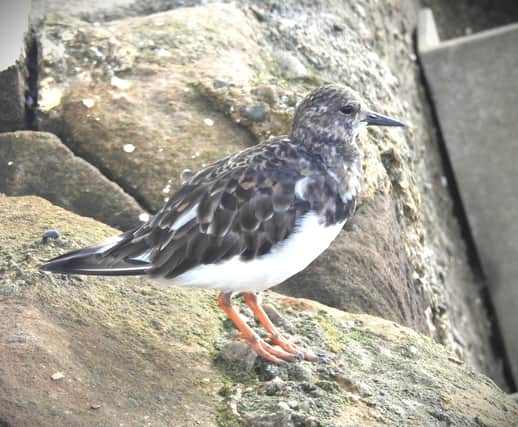Wildlife: These pretty little birds are the ultimate seashore opportunists


This is one of our commoner seabirds and is easily overlooked and unnoticed as they scurry along harboursides, promenades, and by the water’s edge as waves lap on sandy or shingle beaches. Unlike the noisier, bigger, and distinctively marked oystercatchers, turnstones can be around but unseen. They generally occur in small groups of anything from a handful of birds to twenty, thirty or more in small flocks. Feeding on small invertebrates like sandhoppers, but also sea anemones, they will eat birds’ eggs (of their own species and others), and even seagull droppings or bars of soap. These are the ultimate seashore opportunists taking full advantage of human activities and wastefulness. This bird was on the harbour bar at Whitby with purple sandpipers, relatively uncommon autumn, and winter visitors to us. The purple sandpipers are slightly smaller still and again are visitors on passage migration and in winter. They are even more tied to the shoreline than turnstones. They all tend to line up on the concrete and stone revetments along the massive piers.
The turnstones’ chattering calls ring out along ever-changing shorelines as each new wave brings in or overturns new food and the birds search relentlessly for scraps and morsels. In winter the adult birds lose their bright chestnut mantles and black and white head markings for an overall subdued grey hue. By the time the breeding season begins again they will re-gain their showy plumage. In flight, which is strong and direct, they are easily identified by a white wing bar, a wing patch, and a white rump and tail bands. Their calls are rather distinctive and rattling repeated ‘tukatuk’. With us these birds are double migrants and winter visitors and are found along our shores in spring, autumn, and winter. They breed further north in Europe, and in Greenland and Canada. Some non-breeding birds stay with us for the whole of summer too.
Advertisement
Hide AdAdvertisement
Hide AdProfessor Ian D. Rotherham, researcher, writer & broadcaster on wildlife & environmental issues, is contactable on [email protected] ; follow Ian’s blog (https://ianswalkonthewildside.wordpress.com/ ) and Twitter @IanThewildside